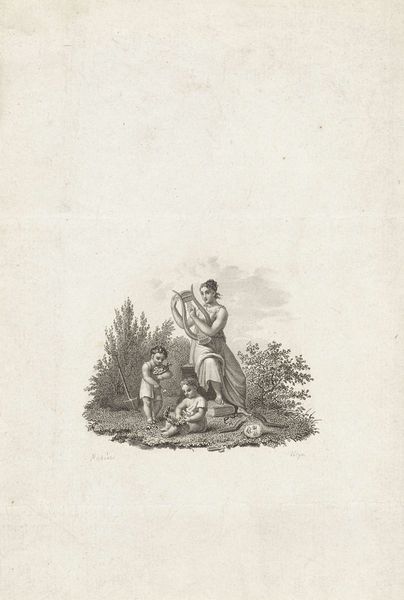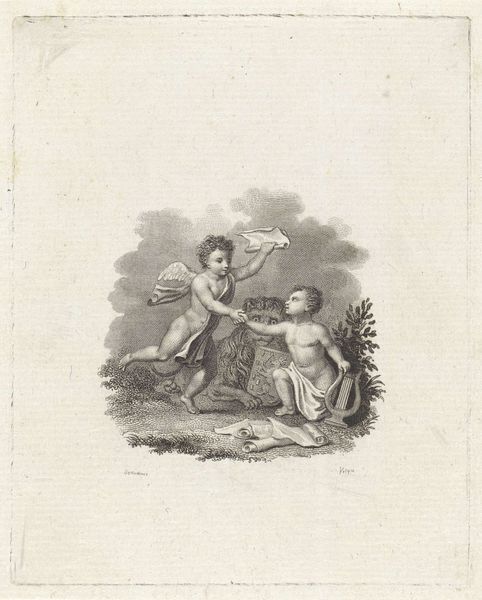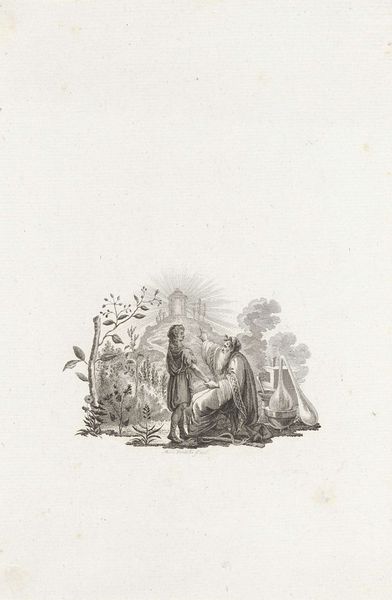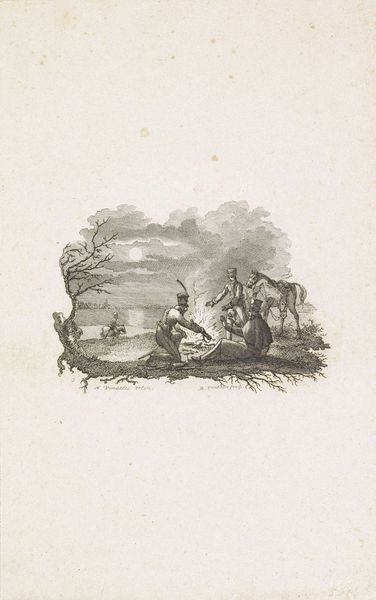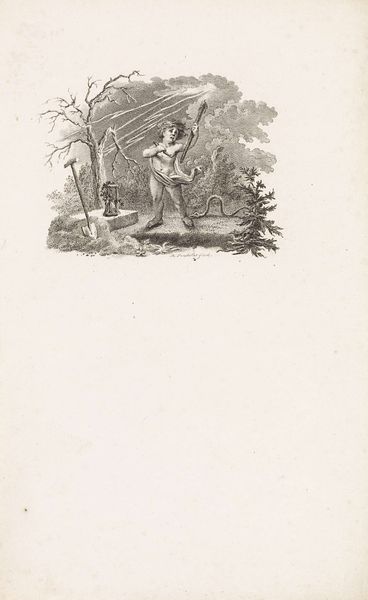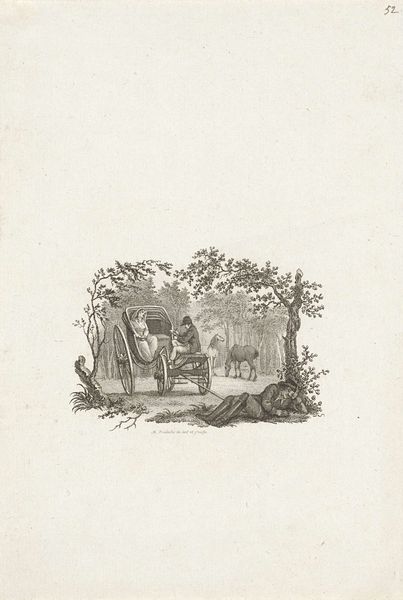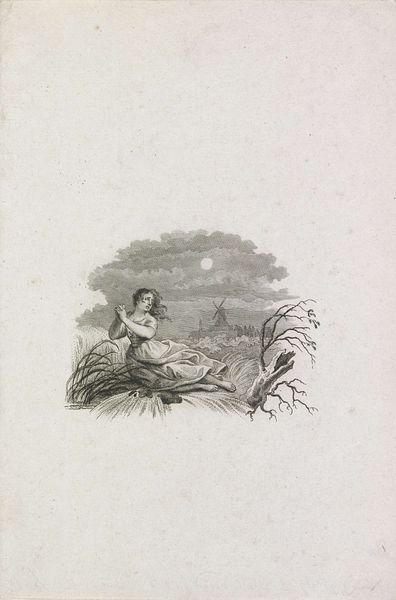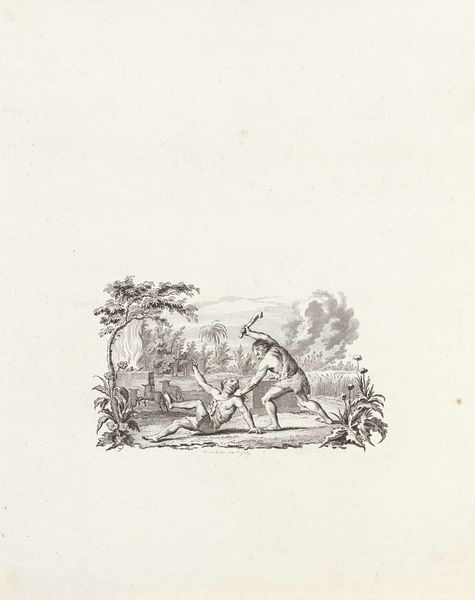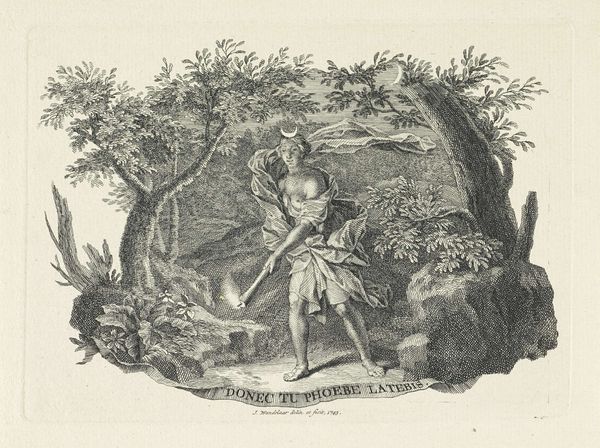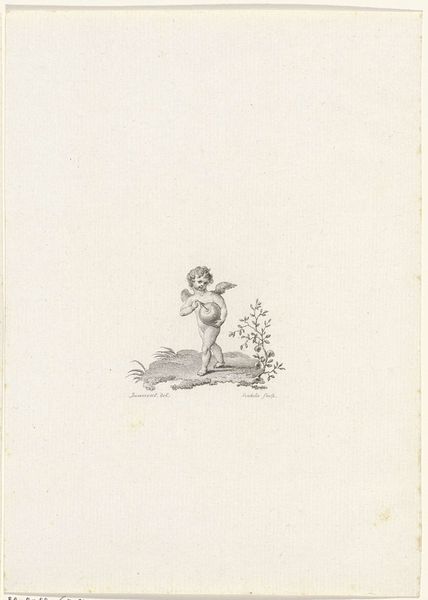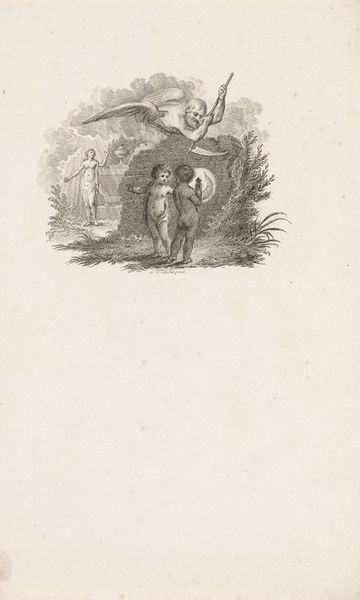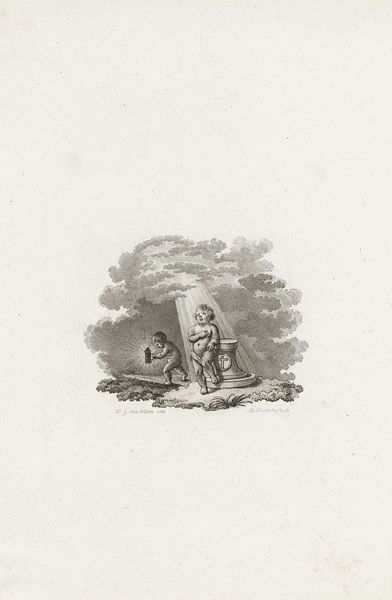
drawing, print, etching, pencil
#
drawing
#
neoclacissism
#
light pencil work
#
quirky sketch
# print
#
etching
#
pencil sketch
#
landscape
#
figuration
#
personal sketchbook
#
idea generation sketch
#
sketchwork
#
pen-ink sketch
#
pencil
#
sketchbook drawing
#
genre-painting
#
fantasy sketch
#
realism
#
initial sketch
Dimensions: height 236 mm, width 156 mm
Copyright: Rijks Museum: Open Domain
Editor: Here we have "Vignet met een marskramer op een landweg," or "Vignette with a Peddler on a Country Road," made sometime between 1751 and 1816 by Reinier Vinkeles. It's a pencil etching, quite small and delicate. What strikes me is how ordinary the subject is, almost… folksy. What do you make of it? Curator: Indeed. At first glance, this seemingly simple etching offers a window into the evolving role of art within a changing society. Consider the socio-political context: the rise of the merchant class and a growing interest in everyday life. How does Vinkeles’ choice to depict a common peddler reflect this shift in patronage and artistic focus? Editor: That’s interesting, I hadn't thought about it that way. So, the very ordinariness of the subject is part of the statement? Curator: Precisely. The artwork’s “folksy” quality, as you mentioned, aligns with the broader cultural trend towards realism and genre painting. Also, the choice of a print—etching—meant wider accessibility. Instead of idealized portraits of the elite, art started representing and reaching a broader public. What could that imply for the function of art? Editor: It’s democratizing, right? Art becomes less about celebrating the powerful and more about reflecting the lives of ordinary people. A form of social commentary, maybe? Curator: Possibly. Or even creating a shared cultural identity. Images like these circulated widely, shaping perceptions and reinforcing social values. Do you think this romanticizes the life of the traveling merchant, or realistically portrays it? Editor: Maybe a bit of both? There’s a certain charm to the scene, but also a sense of the open road, suggesting a transient lifestyle. It makes you think about the changing social dynamics. Curator: Exactly! By examining this work through the lens of its social and historical context, we gain a deeper appreciation for how art actively participates in shaping public perception and even reinforcing certain societal values. Editor: That’s a fascinating perspective. I wouldn’t have considered the broader societal implications without your insight.
Comments
No comments
Be the first to comment and join the conversation on the ultimate creative platform.

